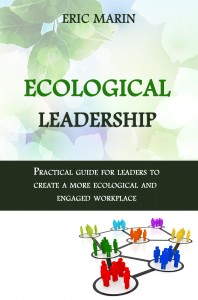Part 2 : Beginning to resent a colleague or your boss? A real life example
 This is Part 2 of a series on the “Enemy Image Process at work“:
This is Part 2 of a series on the “Enemy Image Process at work“:
Part 1 : Beginning to resent a colleague or your boss? 3 powerful steps to free you
Part 2 : Beginning to resent a colleague or your boss? A real life Example
We have discussed in the first part of that post how to clear “enemy images” we form in our heads about others (colleagues, boss…) or ourselves and how powerful that can be to help us in entangled situations.
Someone I was recently coaching discovered how to use that process for an enemy image he simply could not get rid of. He had read on my blog several posts on “Non violent Communication” and asked me how that could help him to bring more peace within.
One of his team colleagues kept boasting about his contribution to a team project, and was “blatantly lying in front of their manager and other team members”. I am quoting here! That colleague was even questioning openly other team members’ involvement. The best defense can be a good offense, right?!
His colleague’s attitude was generating a great deal of anger and frustration he was struggling to deal with. He was aware he was sending silent negative micro-signals. And because that had the potential to rapidly transform into an endless self-feeding process, he realized he was starting to become violent, both with the other person and … with himself.
Reflecting on himself, he realized he was very often acting as a “White Knight” wanting to bring justice! He had many past similar experiences where he simply could not stand the “lies” of others and where he would systematically seek to expose them as liars.
Together, we went through the process. He was already fully aware of the judgments he was making about the other person.
- First, I invited him to put his feelings into words. Putting feelings into words is important as it allows letting the internal pressure off, and make room for empathy and self-empathy. And ultimately, for strategies and possible next steps to emerge. Neuroscience studies have also shown how the brain becomes less “triggered” when words are put onto emotions and feelings.
He very quickly identified anger, hostility and animosity towards his colleague. He was also able to express the judgments and feelings he had for himself: he was feeling discouraged, torn, even ashamed for feeling what he was feeling, and not being able to control or transform it. - We then looked at the unmet needs exposed by the violent feelings he had towards himself and the other person. Mutuality, integrity, trust and respect.
- The third step, which at first was rather challenging, was to guess the other person’s feelings and needs. He was possibly feeling insecure, stressed, discouraged. His needs of being seen and understood, needs of support, possibly of security were not satisfied. That helped my coaching client to understand that the person’s behaviors were driven by very specific human needs. And that he was most certainly adopting certain behaviors as ways of dealing with his unmet needs.
- Going through this process had a number of benefits. Most importantly, it started to bring peace and clarity. The enemy image did not disappear immediately, but I simply invited him to go through the process again every time he would need it. He started to envisage the possibility to speak to that person, expressing his own feelings and needs. And with the intention to empathize with his colleague. He also realized he had shut himself down to possible ways he could collaborate more with his colleague, leveraging his strengths more than he had until now.
Applying that process will allow you to reestablish a qualitative relationship by removing the obstacles to a more authentic communication. And inclusive of your own needs as well as others’.
Working with that process will help you in several of the 8 “Ecological Leadership” Critical Skills I described in my book. Bringing you immediate alignment and clarity to better cope with complex and stressful situations at work.

This post is adapted from topics discussed in the “Ecological Leadership” book.

Leave a Reply